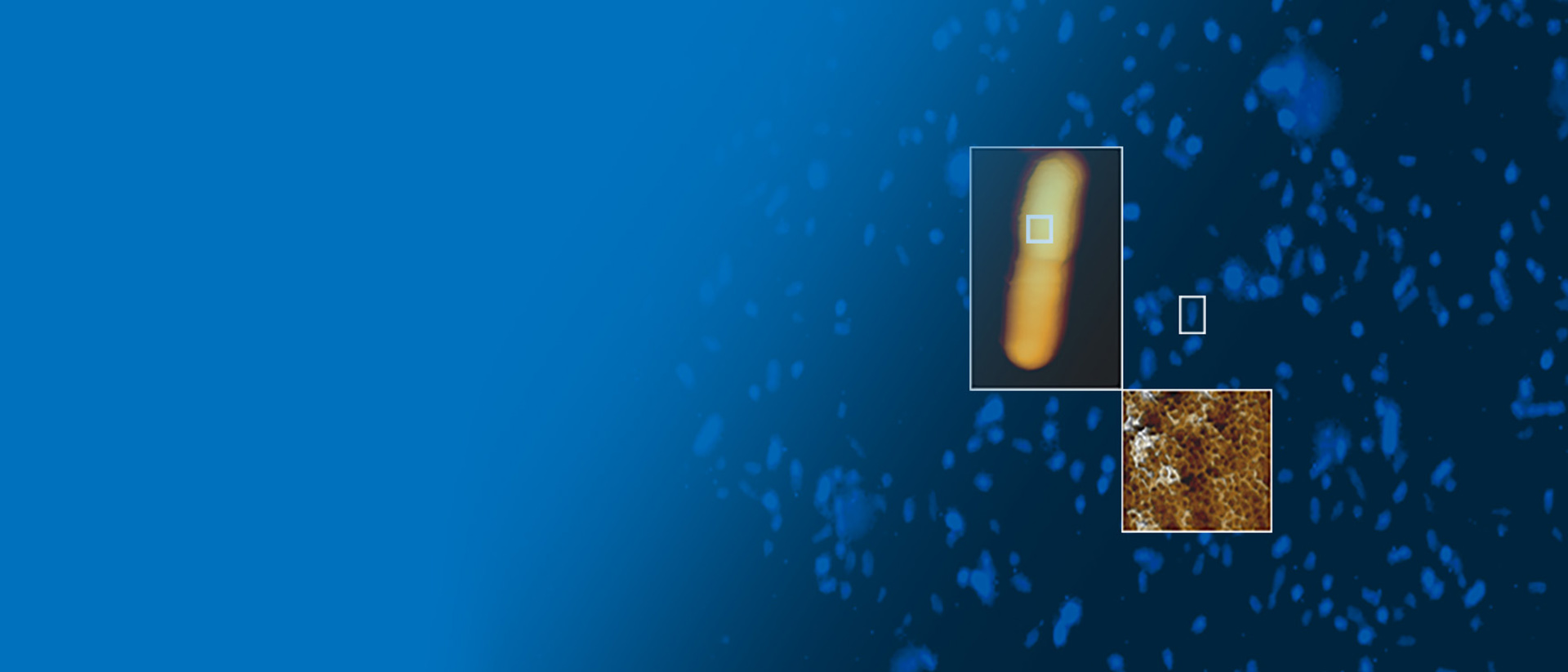

Correlative Optical Microscopy and AFM: Enhancing Biological Studies
Combined AFM and Optical Microscopy System Integrations for Biological Studies
While AFM enables the manipulation of objects on the nanoscale and the characterization of surface properties, nanomechanics and structure, optical measurements reveal bulk details and compositional contrast via fluorescence or immunological labelling. Combining both techniques and correlating their datasets enables novel experiment designs and applications that deliver comprehensive sample analysis and fundamental insights into molecular structure and the function of biological systems.
This on-demand session covers topics such as optical image overlay and the integration of multiple optical, external and AFM channels, and includes a LIVE demo on the NanoWizard V BioAFM. In his talk, Pieter De Beule gives an overview of the integrated hardware configurations available and discusses key limitations and considerations.
Presenter's Abstract
Atomic Force Microscopy (AFM) is performed by approaching a cantilever toward a sample on a flat substrate from above. Inverted optical microscopy illuminates a sample through the substrate from the bottom. This small difference has led to the assembly of hardware configurations that combine AFM with optical microscopy and allow the study of biological systems and dynamic processes from different perspectives, with the aim of learning more about the fundamentals of life. In the past decades, many such system integrations have been reported in literature. In this talk, I will give an overview of these setups and discuss key limitations, including mechanical noise transfer, heat induction, simultaneous data acquisition and image registration. No one system can be considered superior to others, and it ultimately depends on the limitations posed by the sample: fluorophores vs unstained, spatial dimensions, speed of the process, etc. By providing an overview of the underlying optical microscopy fundamentals, the aim is to enable biology experimentalists to make an informed choice on the most appropriate combined microscopy system available for their investigations.
Find out more about the technology featured in this webinar or our other solutions for BioAFM:
Featured Products and Technology
Guest Speaker
Dr. Pieter De Beule, International Iberian Nanotechnology Laboratory (INL), Braga, Portugal
Dr. Pieter De Beule is staff researcher at the international Iberian Nanotechnology Laboratory (INL, Braga, Portugal), where he leads a research team that focuses on the development of new optics inspired technology for the nanosciences. He holds an MSc degree in engineering physics from Ghent University, Belgium, and a PhD in physics from Imperial College London, UK, where he performed research on fluorescence lifetime system development in the group of Prof. Paul French.
This was followed by post-doctoral research at the Max-Planck Institute for Biophysical Chemistry in Göttingen, Germany, with Dr. Thomas Jovin at the Laboratory of Cellular Dynamics on the development of a new approach for fast and efficient confocal-like microscopy. He joined INL in 2011, where he has implemented several new system integrations of combined AFM and optical microscopy, enabling new experimental approaches for imaging in biology. He is a member of the Optical and the Society of Photo-Optical Instrumentation Engineers (SPIE).

